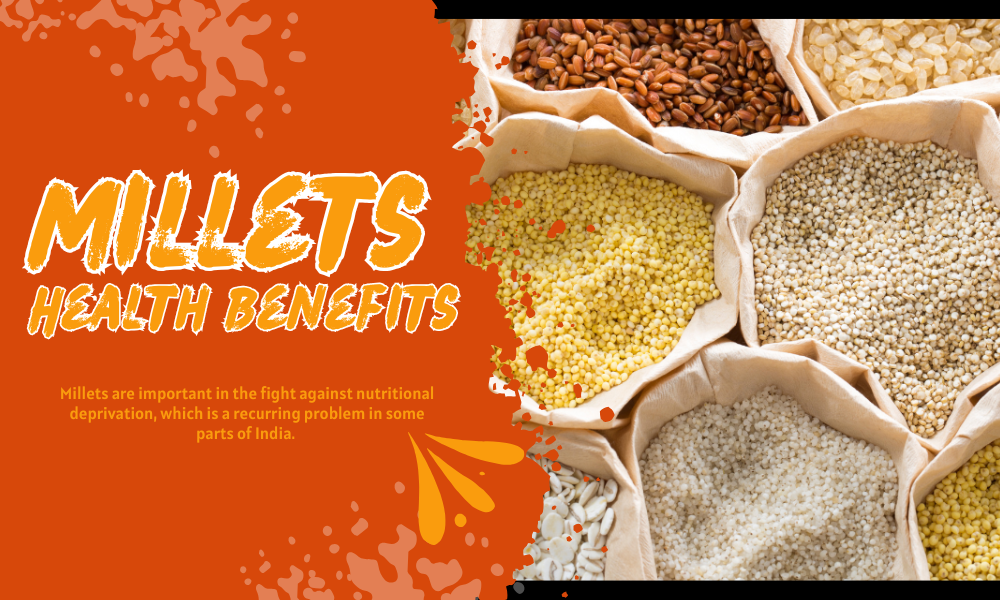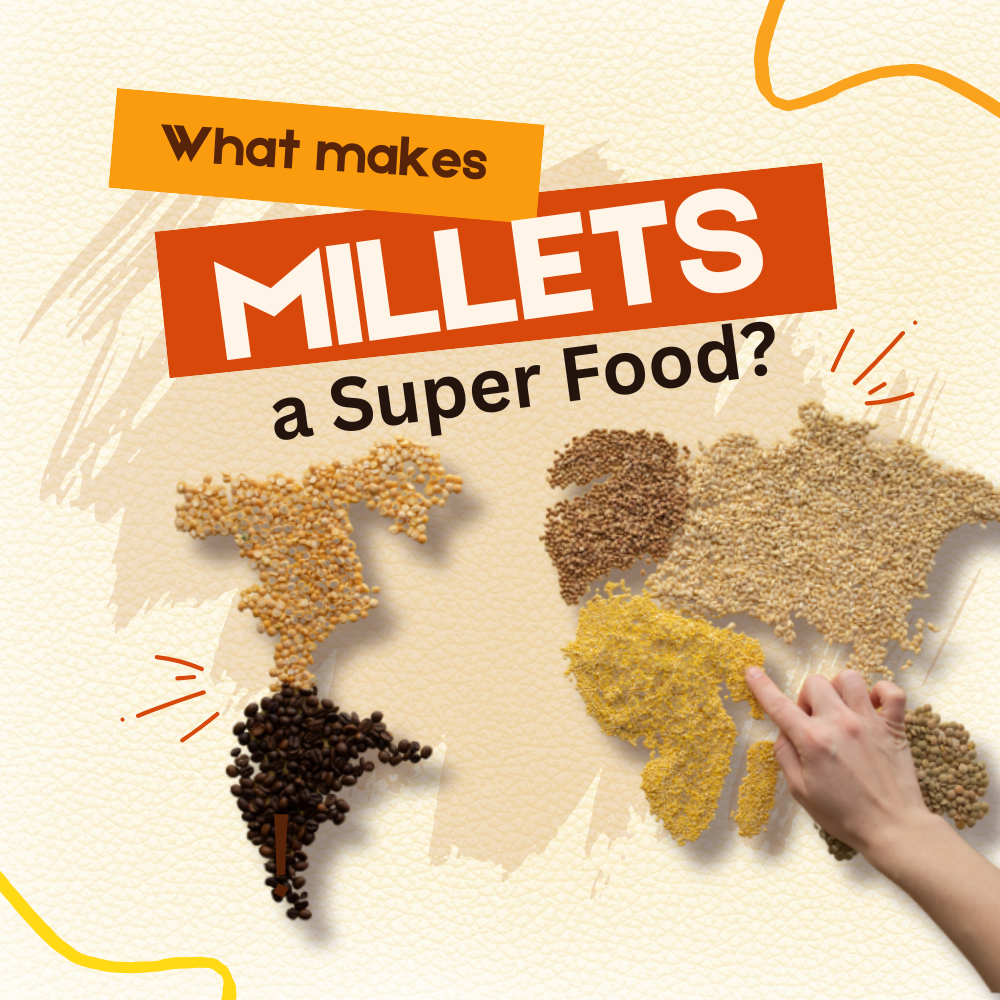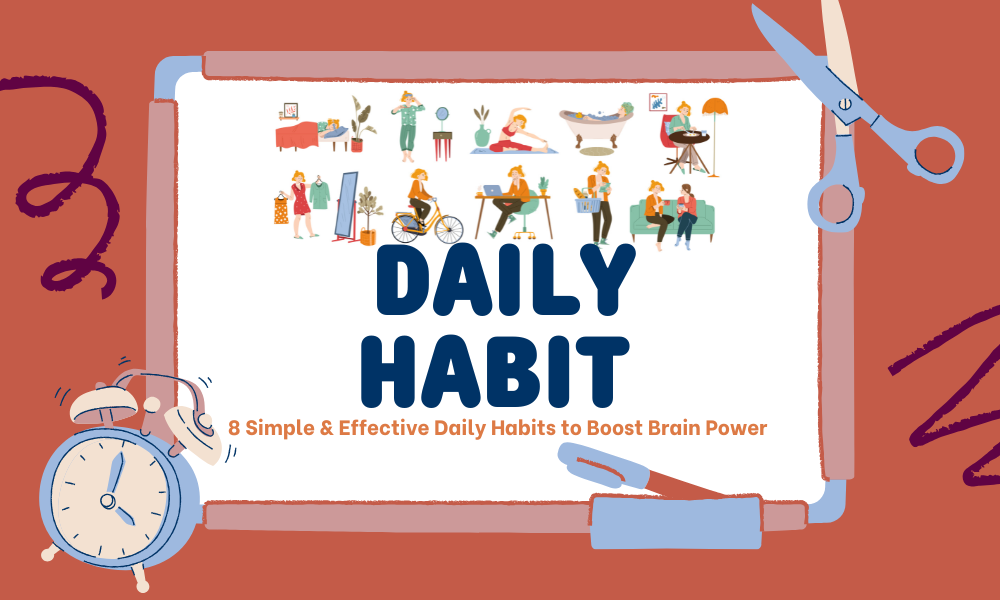What Makes Millets a Super Food? The Nutritional Powerhouse and Its Health Benefits
Millets have been connected to health benefits and are a vital source of nourishment to assure the supply of food around the world. Prime Minister Narendra Modi has highlighted the significance of millet, considered a super food. In order to keep nourished and healthy, PM Modi suggested that students include super foods like millets in their daily meals.

Nutrition Powerhouse
Millets are important in the fight against nutritional deprivation, which is a recurring problem in some parts of India. It has been demonstrated that including them in regular meals improves overall wellness effects, particularly for vulnerable groups like pregnant women and children. Additionally, millets have become quite trendy among consumers who prioritize health around the globe, which could lead to a worldwide transformation in eating habits.
The Prime Minister of India called the ancient original grain of India Shree Anna (Mother of All Grains), or millet, for its much health, eating habits, and environmental benefits. Sorghum is called the king of millets; you can consume it daily, easily digestible; no allergy occurs by daily consumption in moderate way. Since all millet has distinct characteristics and a set of benefits, it’s best to start consuming them slowly and watch how your body reacts.
Types of Millets and Their Health Benefits
Here are various types of millets mentioned with their benefits, each offering unique nutritional values.
Major Millets
Finger Millet (ragi/nachni): Rich in calcium, fiber, iron, and protein. One of the most nutritious and healthy cereals is consumed in a few states of South India and some regions of Maharashtra.
Pearl Millet (bajra): Used in Indian and African cuisines. It is rich in amino acids, fiber, zinc, magnesium, minerals, and vitamins. Fiber helps regulate blood sugar levels, can help prevent constipation.
Sorghum (jowar, great millet): Gluten-free and rich in antioxidants, widely used to make flatbreads in Indian cuisine, used to feed animals, used to produce oil; you can make granola bars and cookies.
Minor Millets
Proso Millet (chena/ panivaragu/ common millet): Rich in protein, minerals, and fiber, and used in various traditional dishes. It may help raise HDL cholesterol levels.
Kodo Millet (kodra): Naturally gluten-free grain, Great substitute for rice and rich in protein, magnesium, and antioxidants.
Foxtail Millet (kakum/kangni/Italian millet): High in carbohydrates provides sustained energy. It contains iron, calcium, and magnesium, as well as vitamins B, A, and E.
Barnyard Millet (sama/samak/ Japanese millet): Known for its high fiber content and easy digestibility, frequently used to make various recipes in the Hindu fasting tradition, like Navratri, Ekadashi, etc.
Little Millet (Samai): A good source of B vitamins, commonly used in porridges. It helps in weight loss, reduces the risk of colon cancer, and reduces cholesterol.
Browntop Millet (chotti kangni): Native and grown in the southern parts of India, this millet variety is rich in dietary fiber, protein, and iron. It prevents constipation, regulates blood sugar levels, and prevents diabetes, arthritis, and obesity.
Pseudo Millets
Amaranth (rajgira): Excellent substitute for grains and commonly used in the Hindu fasting food. It has anti-inflammatory properties; it lowers cholesterol, improves bone health, and boosts immunity.
Buckwheat (kuttu): Grown in India, Russia, and China, buckwheat is a pseudo-cereal and rich in proteins, antioxidants, and fiber. It helps to lower cholesterol and improve blood pressure, and protects against heart disease.

Gluten-Free Living: Why Millets Are a Smart Choice
These millets are free of gluten, nutrient-dense, and high in nutritional fiber. Because of their beneficial health effects and capacity to serve those with restricted diets, they have become increasingly popular in India. Because grains are far more resistant to variations in the climate and use fewer resources, such as fertilizer and water, than other crops like cereals, they are also seen as environmentally friendly.
The millets are a smart choice for gluten-free living because they have various health benefits, such as being nutrient-rich, naturally gluten-free, may help with blood sugar control, promote a healthy digestive system, regulate blood sugar levels, multipurpose and easy to cook, sustainable, and environmentally friendly. The gains are rich in fiber, minerals, and proteins, are help to regulate your cholesterol levels.
How to Add Millets to Your Daily Diet
The Millet grains are a nutritious food that is exceptional for you, climate-friendly, healthy, and filled with nutritional value. It lowers inflammation and offers protection against oxidative stress-related diseases. Millets can have their taste and digestibility enhanced by soaking them before cooking. Various types of millets can be mixed to make a nutritious, well-balanced meal.
The multiple uses of millets in the kitchen are additionally remarkable. Millets can easily be used in place of grain, rice, or even oatmeal in the dishes you love because of their delicate textures and natural aromas. This old crop may be readily introduced into modernized dishes; however, it is in the form of a spicy millet-based side meal, a healthy millet salad, millet khichdi, idly, dosa, thalipeeth, millet pulao, or a creamy porridge and many more dishes.
Why Millet Is the Future of Food Security
Indian farmers, who come from one of the top millet-producing regions, have been adopting millet as a practical way to fight a shortage of water. For ages, millets have played a crucial role in Indian agriculture and cooking. Among the first crops ever grown by humans, crops have survived the test of time because they can thrive in harsh environments and use little water.
Although they may be used as nutritious food and animal feed, millets have an additional benefit. Because of its adaptability, millet farming increases farmers’ productivity and maximizes the advantages of their farming methods.
Conclusion
Millet grains are an excellent source of protein, fiber, mineral substances, iron, and calcium. These particular grains have been recognized for being wholesome, high in nutrients and free of gluten. Rich in nutritional agents and phytochemicals as well such grains can help treat a variety of illnesses.
Numerous varieties of millet are available, including foxtail millet, proso millet, small millet, barnyard millet, sorghum millet, kodo millet, finger millet, and pearl millet. Additionally, millets are easily digested.
Author’s Bio
Kinjal is a professional content creator with a passion for turning thoughts and ideas into engaging, impactful words. She enjoys exploring a wide range of topics and brings creativity, clarity, and enthusiasm to everything she writes.
















